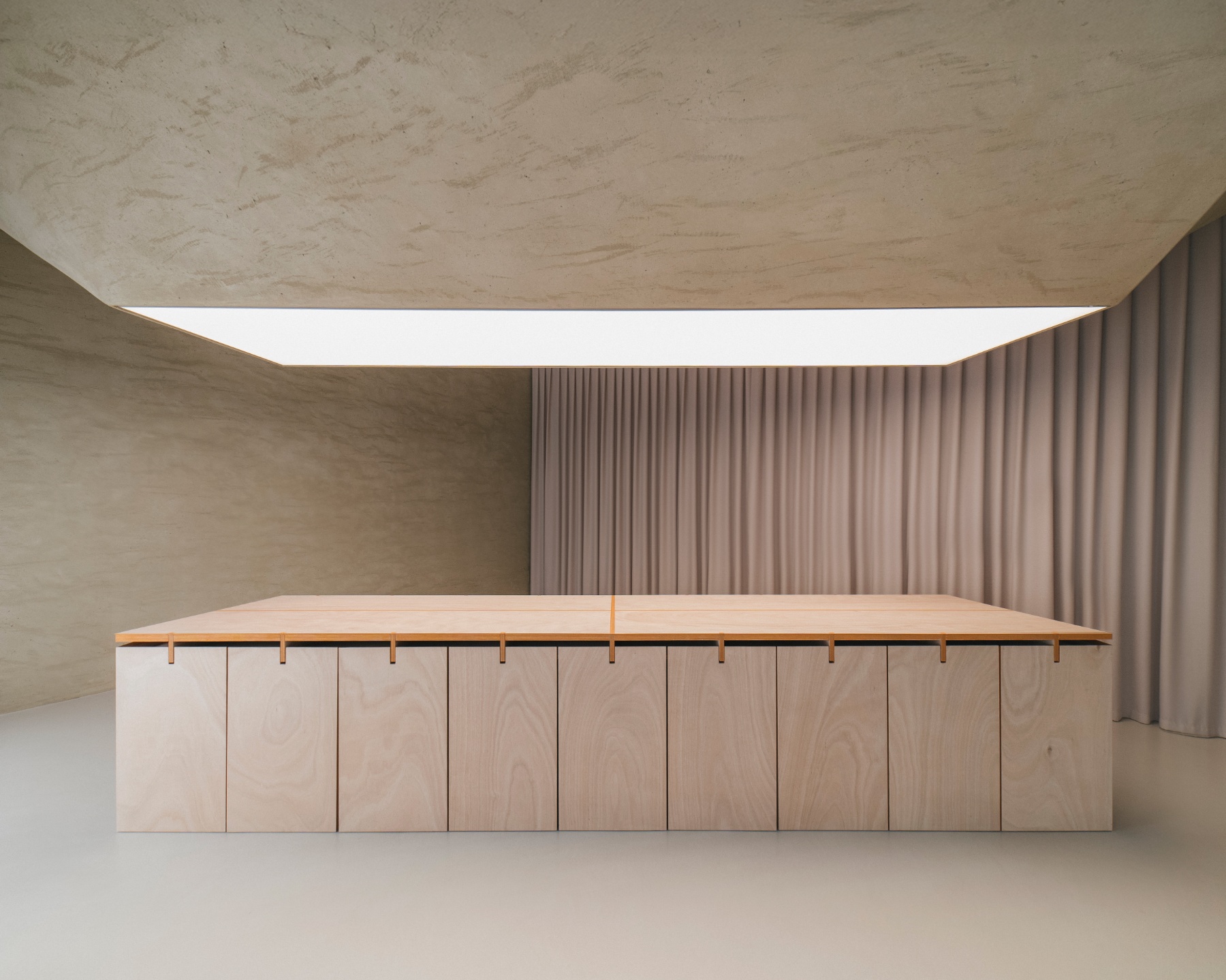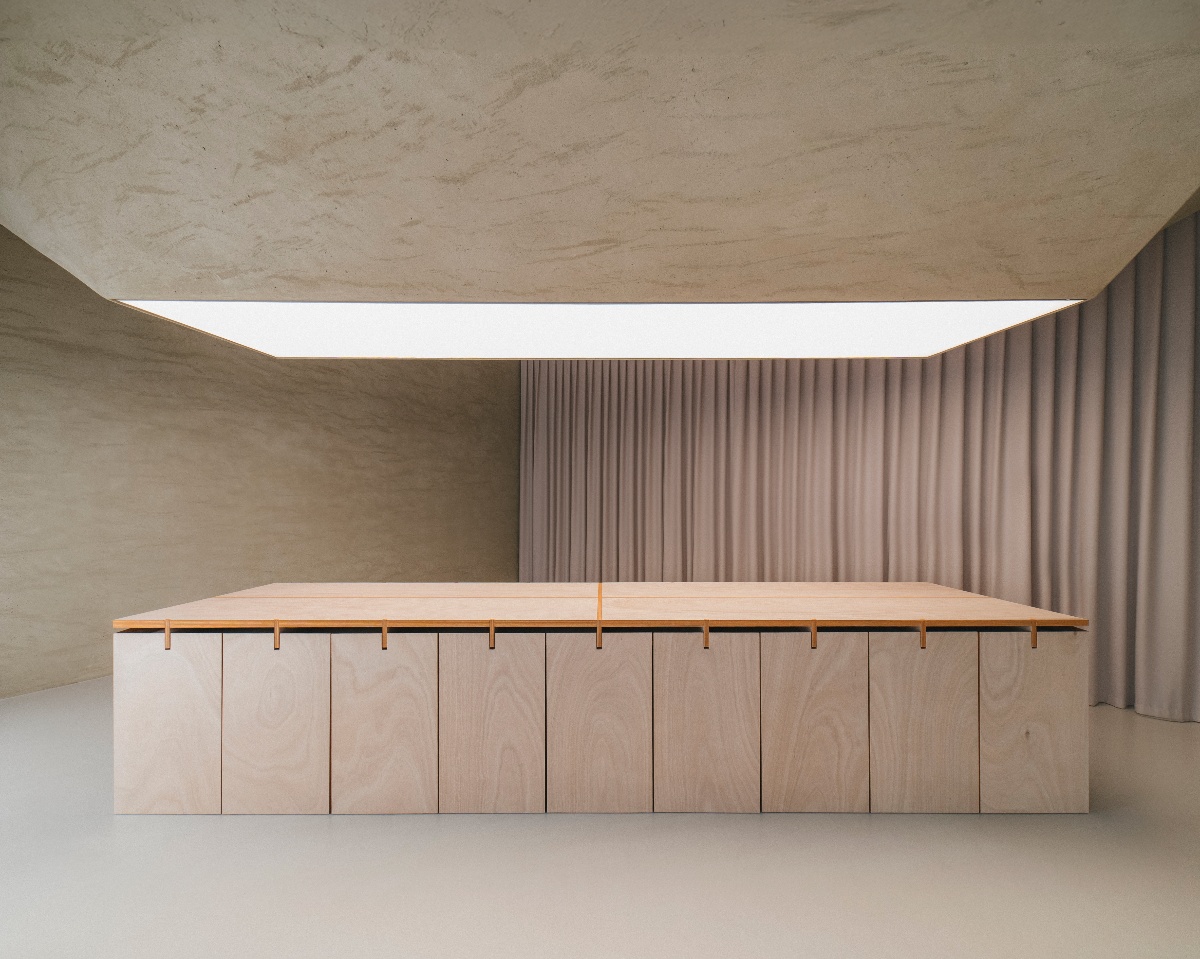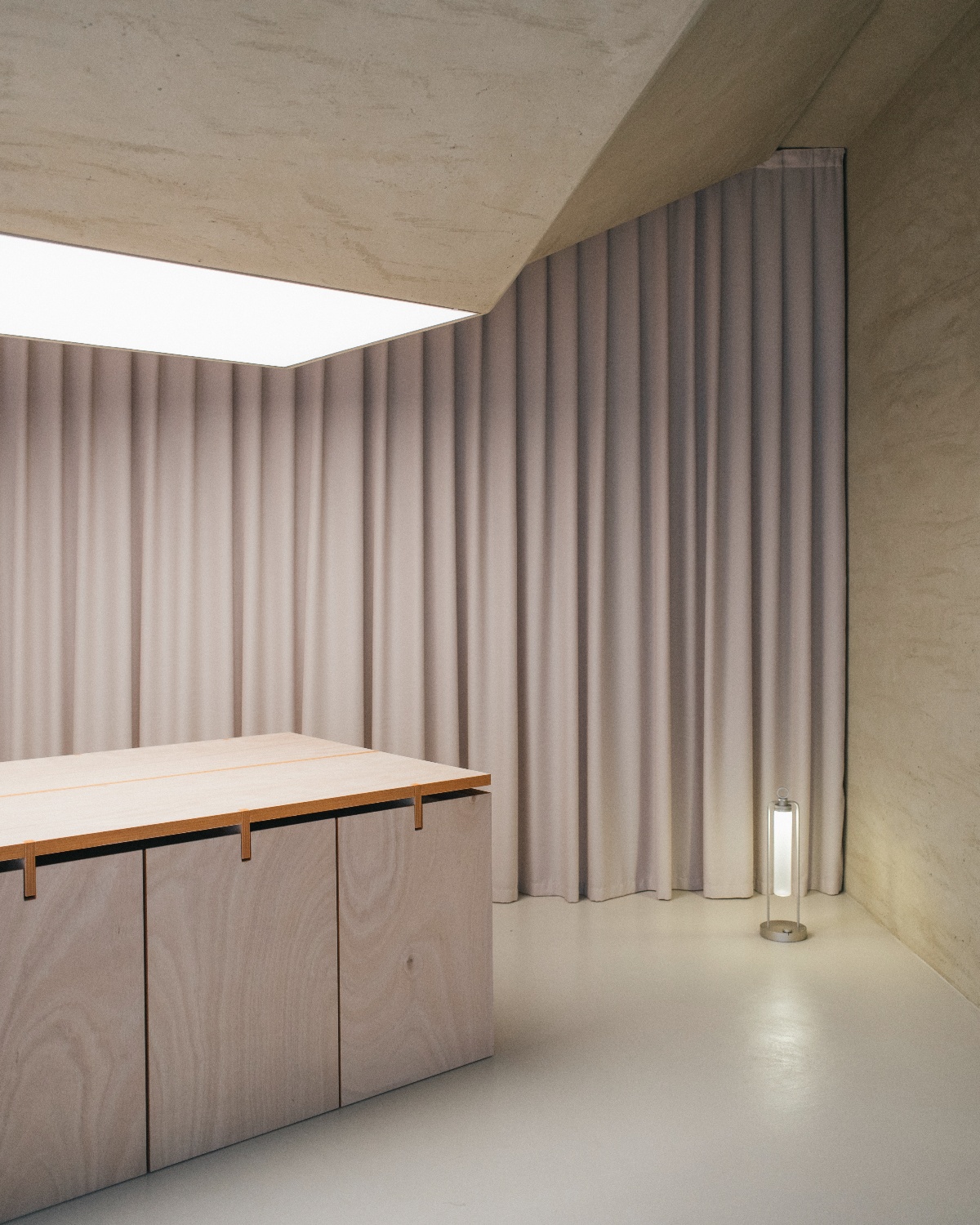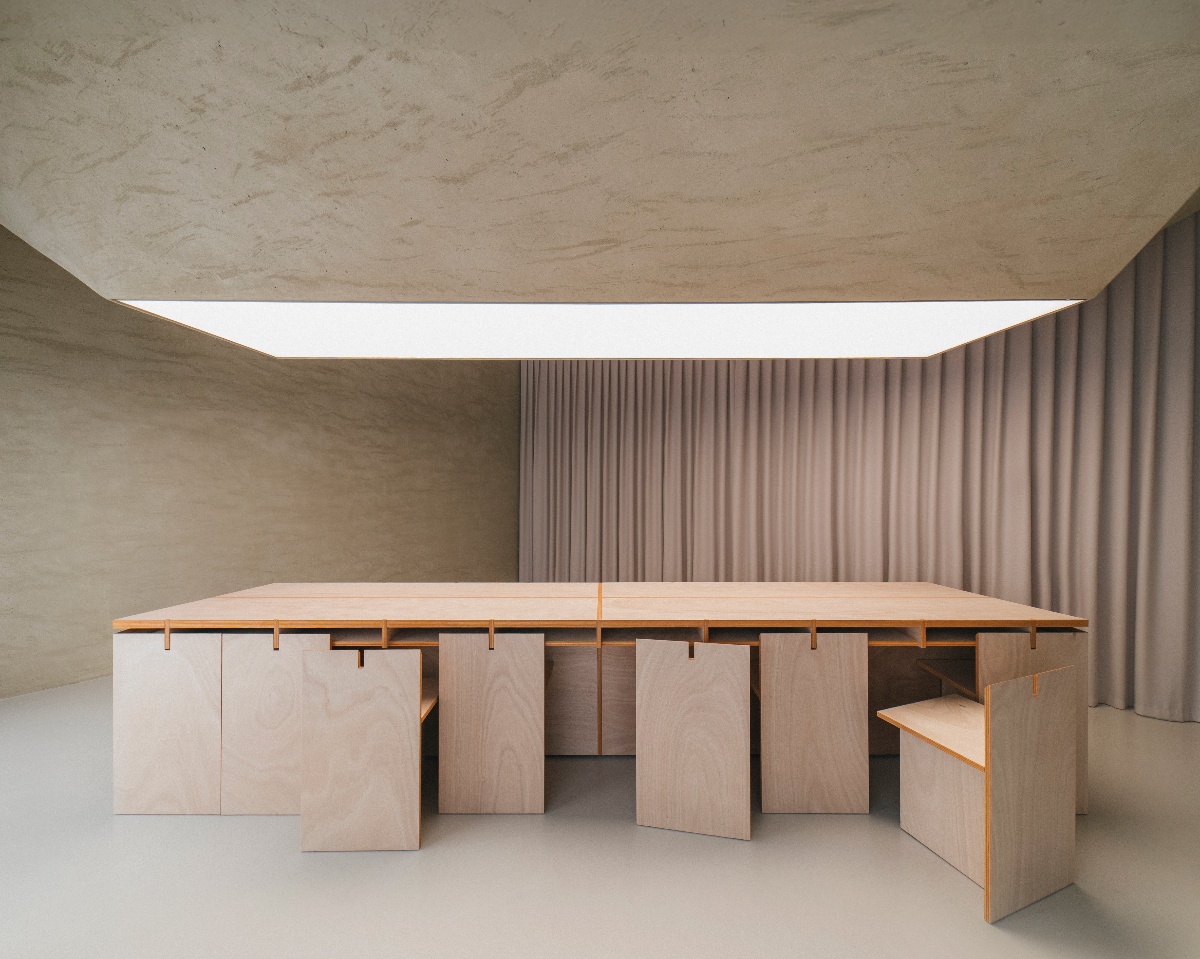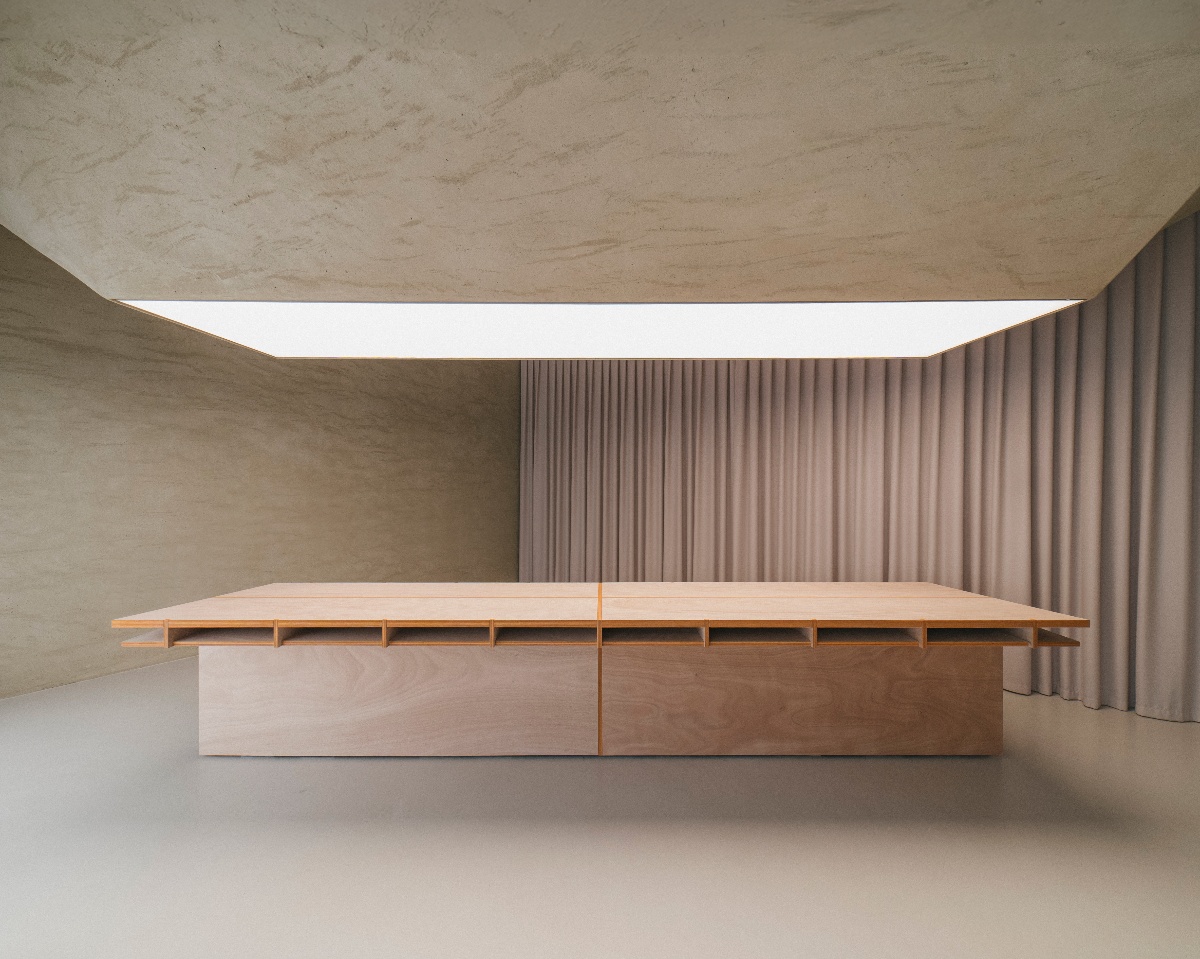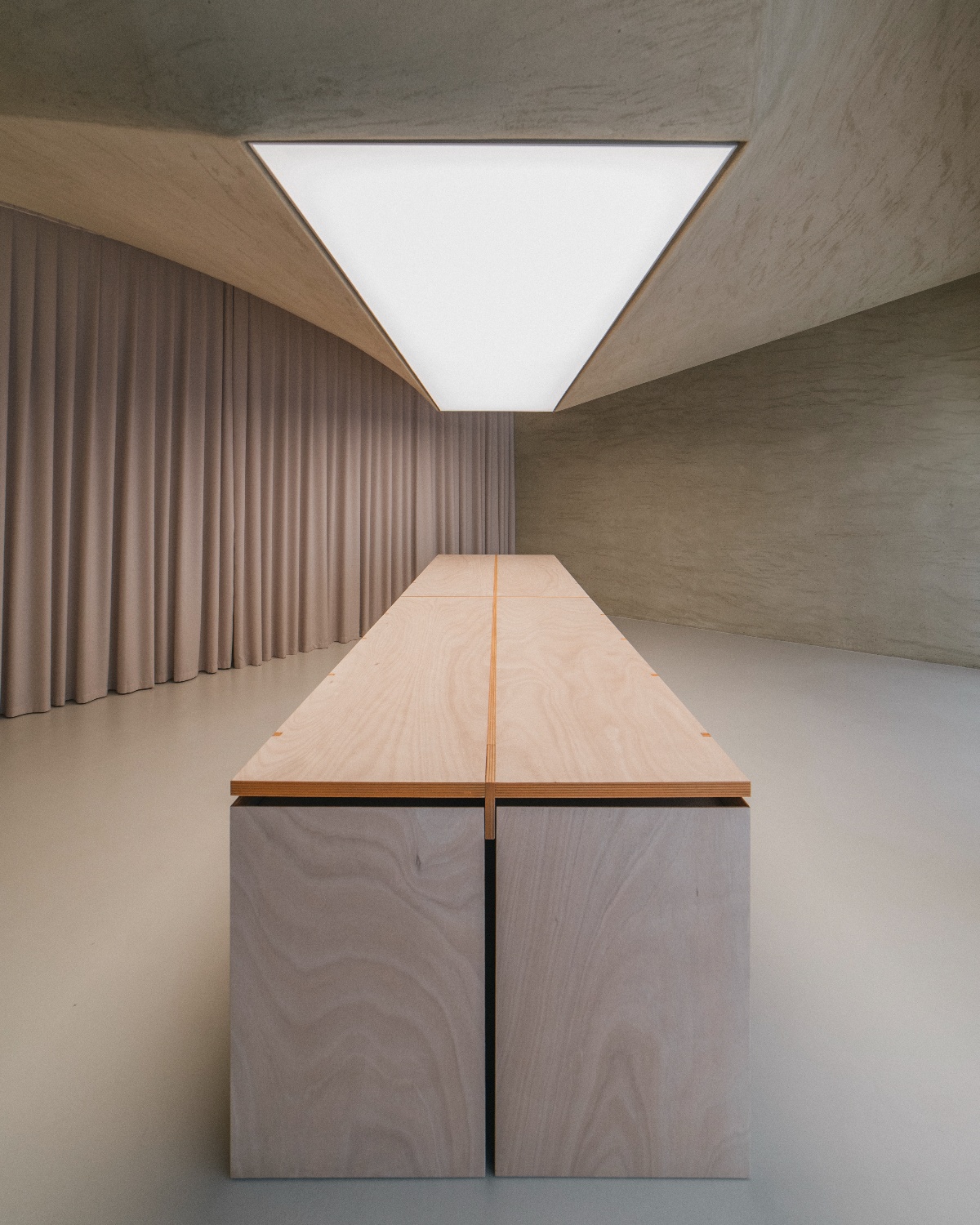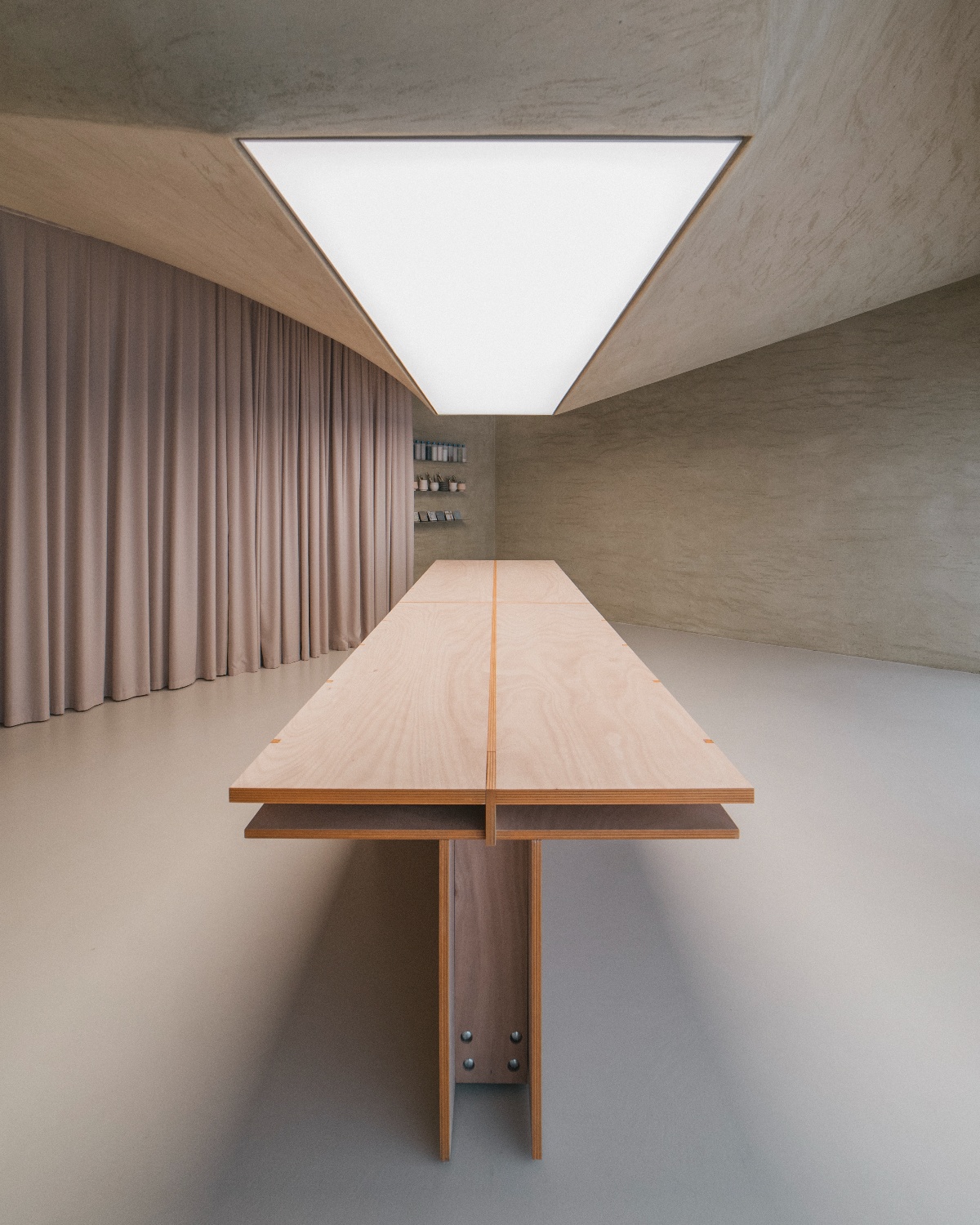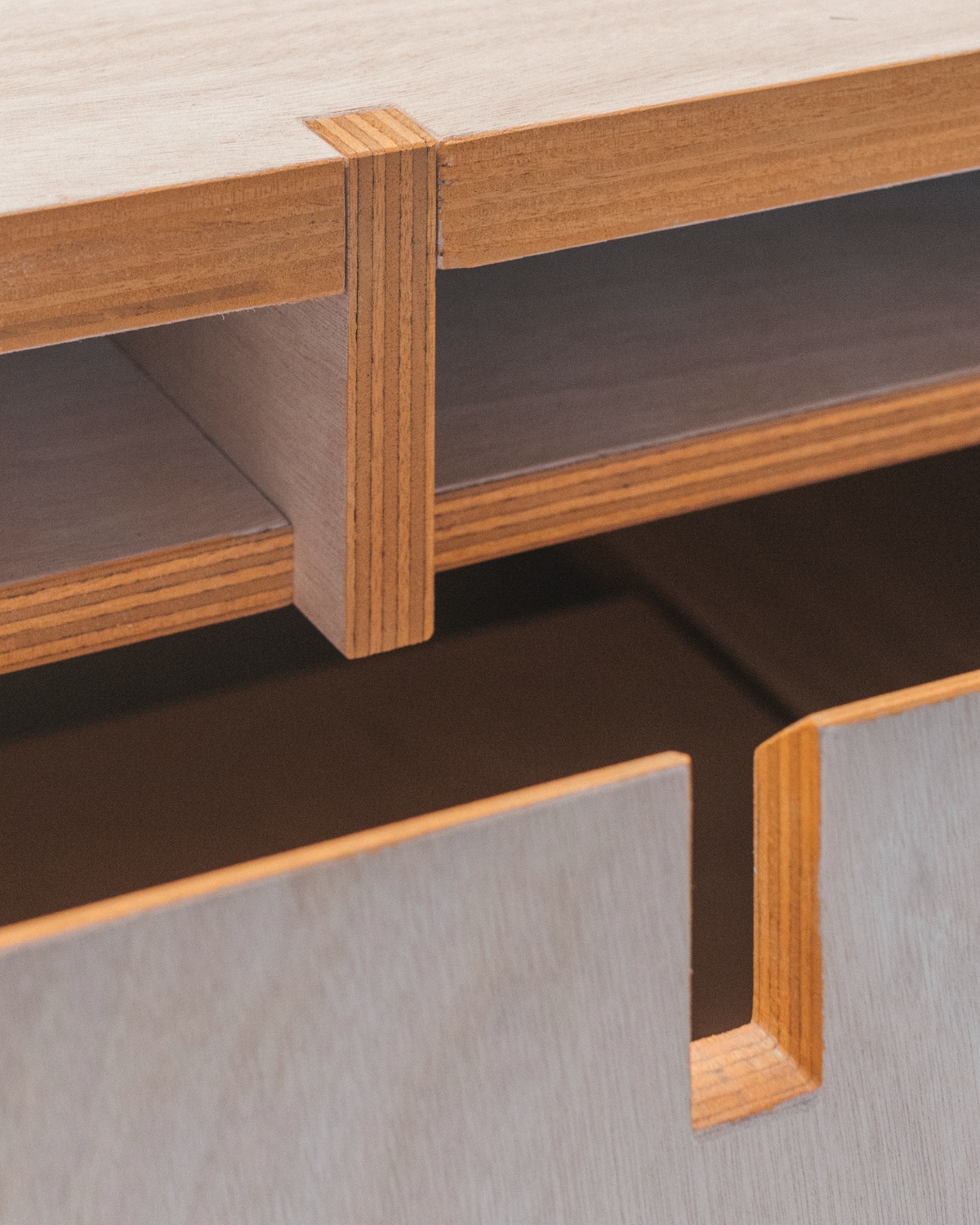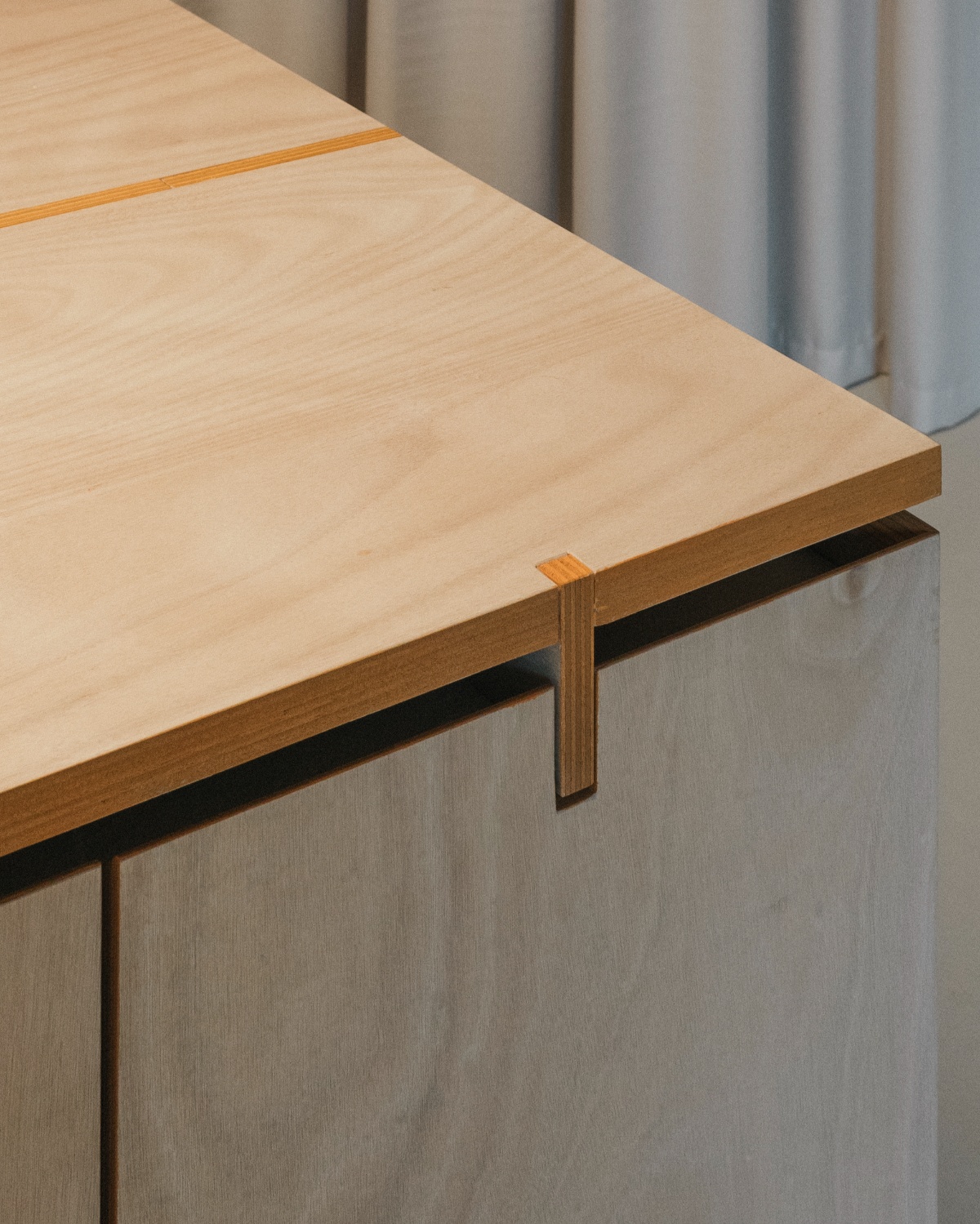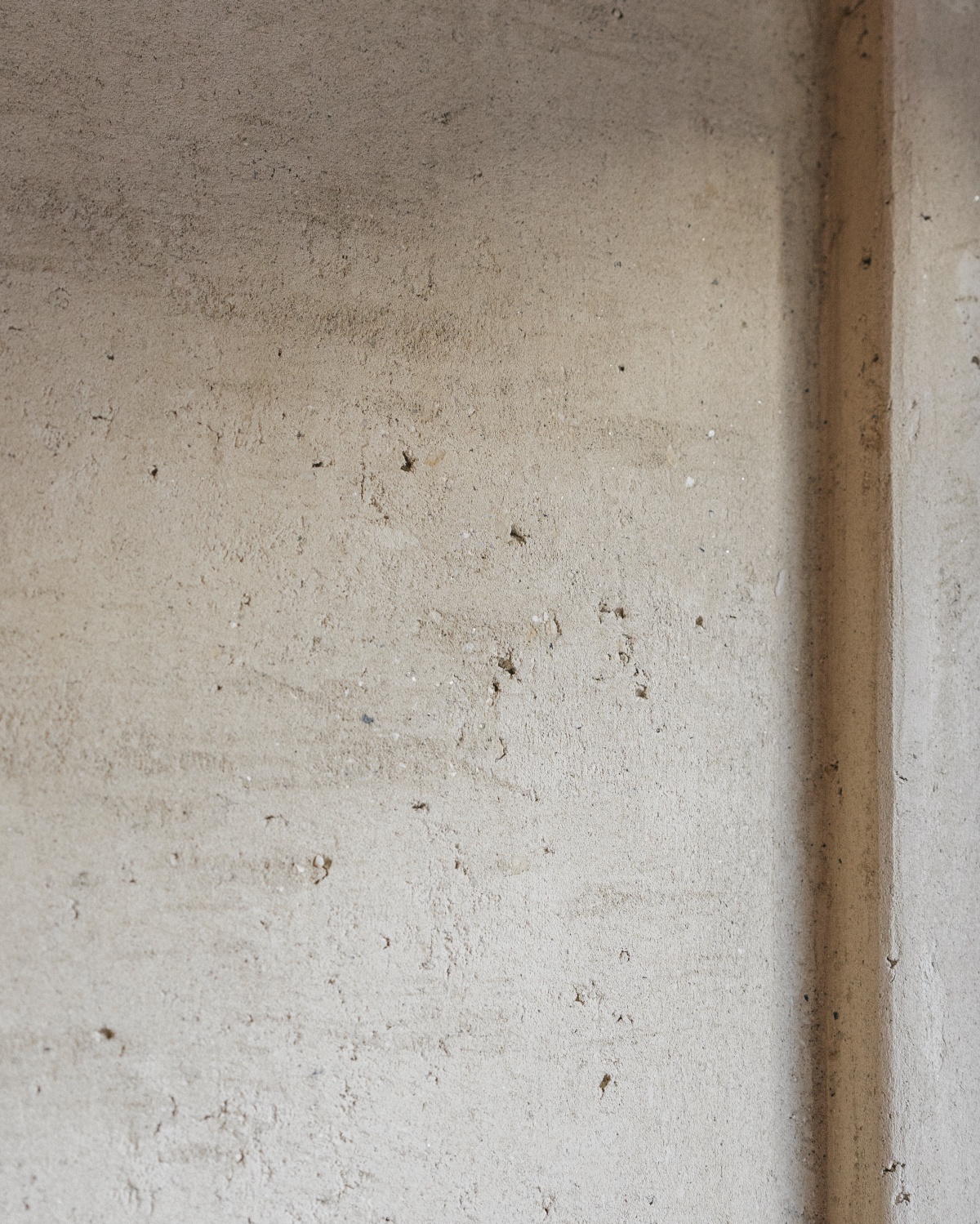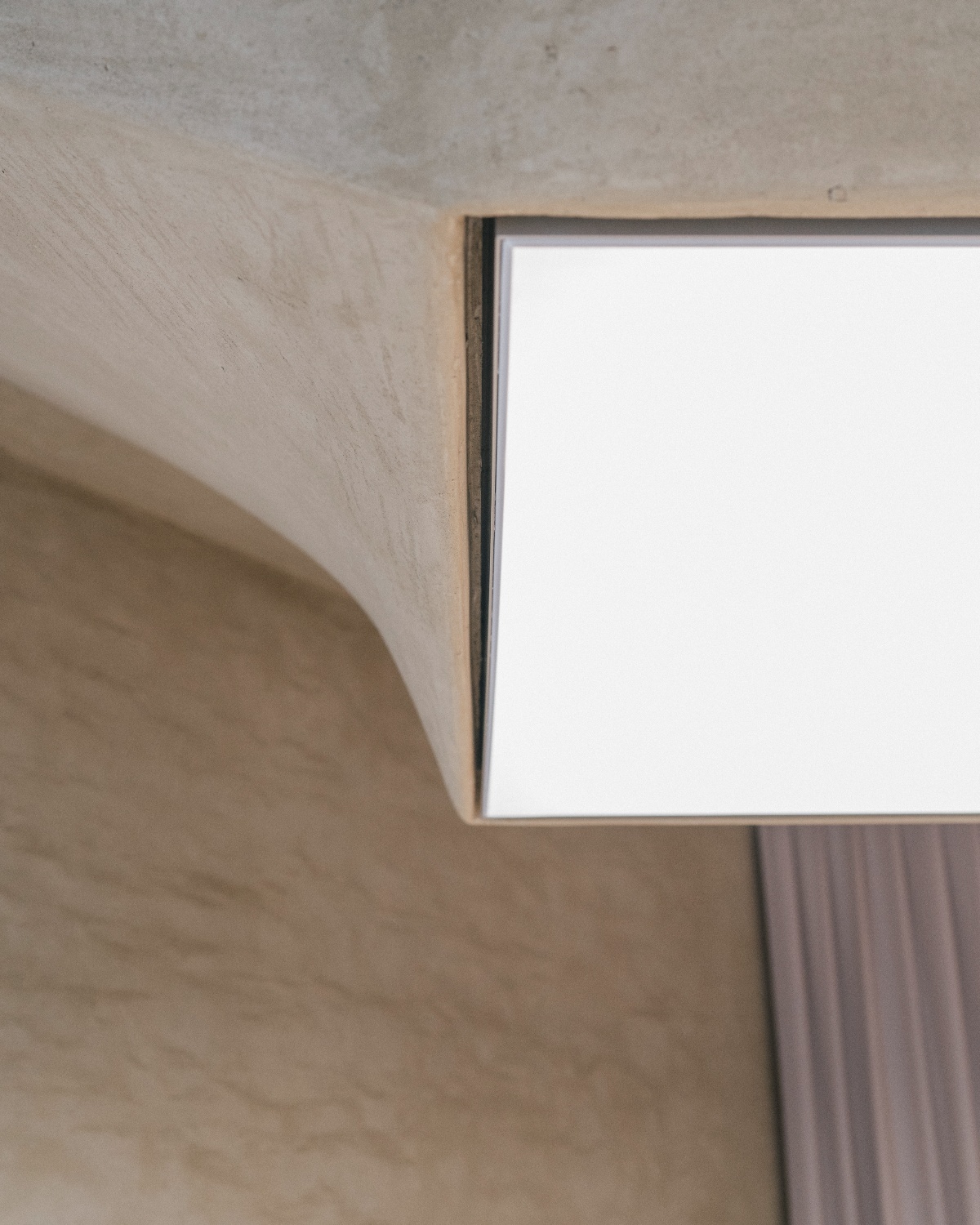Mosca.Bianca, designed by architectural studio AACM, is a ceramic workshop conceived as an exhibition in itself — a space where process, material, and form cohabit.
It is both a place of making and a space of display, where the physical act of working with terracotta becomes part of the architectural narrative. At the centre of the design is a singular gesture: the ceiling twists like clay on a potter’s wheel, drawing the space upward in a centripetal motion. A single zenithal light pierces this volume from above, acting as a vertical anchor and focal point.
Below, a sculptural table cuts diagonally across the floor. Initially read as a monolith — altar-like, opaque — the object reveals itself as functional. Hidden chairs and modular elements unfold from within, exposing a tectonic structure of okumé surfaces and T-shaped supports. Despite its solidity, the table is light, balanced, almost suspended — an engineered stillness that quietly resists gravity.
The surrounding material palette speaks to the circular nature of terracotta. Walls and ceilings are finished in rammed-earth plaster made from clay and brick production waste, grounding the space in its own ecology. The surface is raw, tactile, unpolished — a record of process, not product.
Not all is immediately visible. Tools are stored behind curtain-lined recesses, mounted on metal blades like theatre props — accessible only when needed, maintaining a sense of calm continuity between use and repose.
The first exhibition to inhabit the space is titled “Last Supper.” Referencing Leonardo’s composition, the altar-table becomes the centre of a new kind of ritual — one where the tools of the craft are given presence. Laid out as a mise en place for a ceramic banquet, the often-unseen instruments of making are presented without hierarchy, inviting attention to the invisible labour behind every object.
Founded in 2020 by Nicolò Chinello and Rodolfo Morandi, AACM (Atelier Architettura Chinello Morandi) is a design studio based in Padua and Milan. Known for its refined approach to architecture, AACM blends minimalism with contextual sensitivity, focusing on the transformative potential of everyday spaces. Their work, ranging from intimate residential projects to public institutions, emphasizes sustainability, material honesty, and the storytelling power of architecture.

